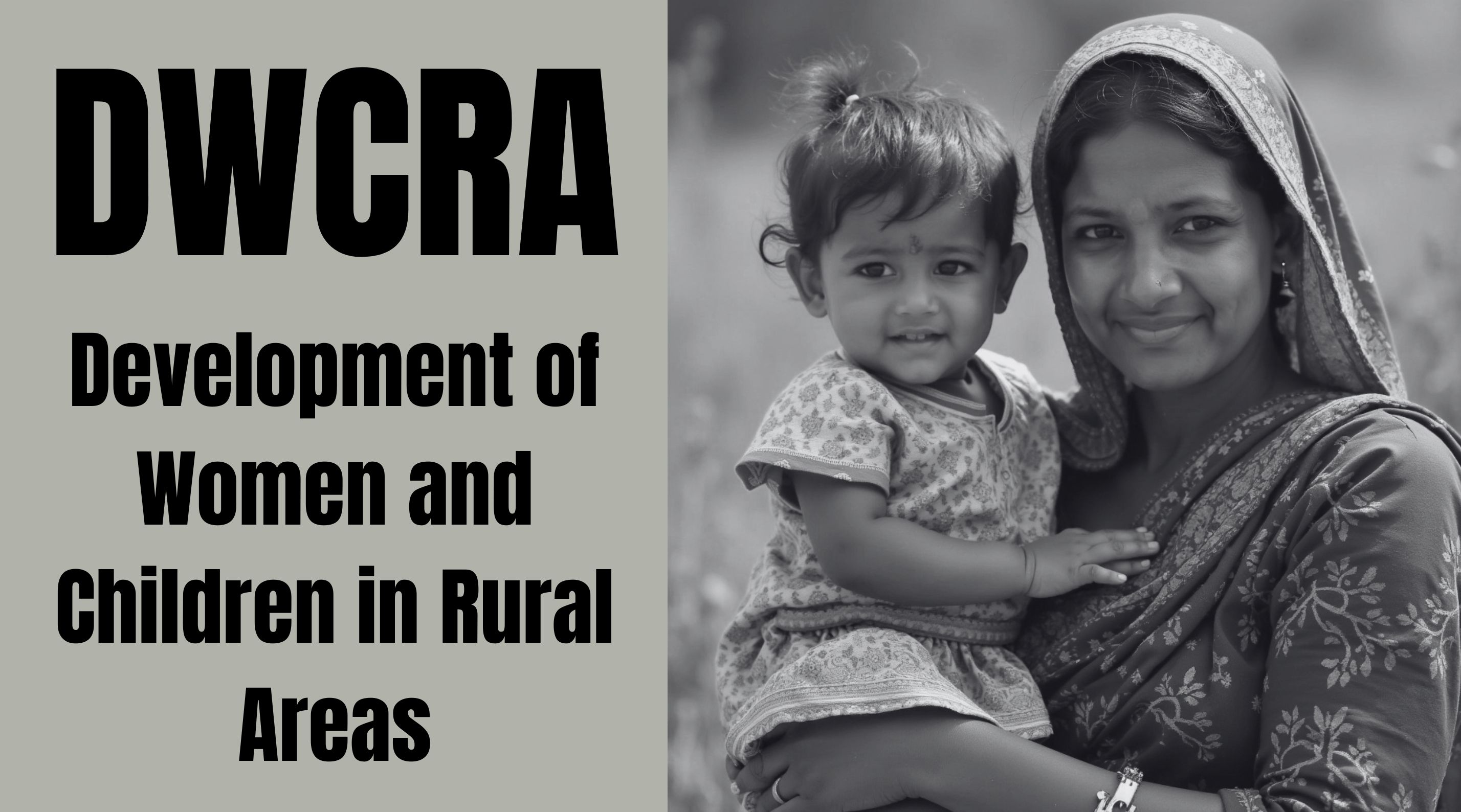DWCRA Full Form-Development of Women and Children in Rural Areas
by Shashi Gaherwar
0 2054
Development of Women and Children in Rural Areas: Challenges, Initiatives, and Progress
Introduction
Women and children in rural areas play a crucial role in the socio-economic fabric of a country. However, they often face significant challenges, including limited access to education, healthcare, and economic opportunities. Addressing these issues is vital for overall national development. Several government schemes, non-governmental organizations (NGOs), and community-driven initiatives aim to improve their quality of life and empower them for a better future.

Challenges Faced by Women and Children in Rural Areas
- Limited Access to Education
- Lack of proper schools and trained teachers in rural areas.
- Gender discrimination results in lower literacy rates among girls.
- Child labor and early marriages prevent children from completing education.
- Poor Healthcare Facilities
- Lack of hospitals and trained medical professionals.
- High maternal and infant mortality due to inadequate prenatal and postnatal care.
- Malnutrition among children due to poverty and food insecurity.
- Economic Dependence and Unemployment
- Limited job opportunities for women in rural areas.
- Cultural barriers restrict women from working outside their homes.
- Lack of financial literacy and access to banking services.
- Gender Discrimination and Social Issues
- Patriarchal society limits women’s decision-making power.
- Domestic violence and gender-based violence remain widespread.
- Early marriages and dowry-related issues affect young girls.
- Lack of Awareness and Support
- Women are unaware of their rights and available government schemes.
- Limited participation in political and social decision-making processes.
Initiatives for Development of Women and Children in Rural Areas
- Educational Reforms and Programs
- Beti Bachao Beti Padhao (BBBP) – Promotes girls' education.
- Sarva Shiksha Abhiyan (SSA) – Ensures free and compulsory education for children.
- Mid-Day Meal Scheme – Provides nutritious meals to encourage school attendance.
- Healthcare and Nutrition Programs
- Integrated Child Development Services (ICDS) – Focuses on maternal and child nutrition and healthcare.
- Janani Suraksha Yojana (JSY) – Promotes institutional deliveries to reduce mortality rates.
- Poshan Abhiyan – Aims to eradicate malnutrition among children and women.
- Economic Empowerment of Women
- Self-Help Groups (SHGs) – Encourage women to engage in small-scale businesses.
- Mudra Yojana – Provides financial assistance to women entrepreneurs.
- Skill Development Programs – Train women in vocational skills to enhance employability.
- Social Welfare and Protection Initiatives
- Ujjwala Yojana – Provides free LPG connections for a smoke-free cooking environment.
- One Stop Centers (OSC) – Support women facing domestic violence.
- Women Helpline 181 – Assists women in distress.
- NGO and Community-Driven Efforts
- NGOs provide education, healthcare, and skill training at the grassroots level.
- Community programs break social taboos and promote women’s rights.
Progress and Impact of These Initiatives
- Increased Literacy Rates
- Improved girls’ enrollment in schools due to awareness campaigns.
- Reduced dropout rates through mid-day meals and scholarships.
- Better Healthcare and Reduced Mortality Rates
- Increased institutional deliveries, lowering maternal and infant mortality.
- Immunization programs have reduced deadly diseases among children.
- Economic Growth and Financial Inclusion
- More women engaged in income-generating activities.
- SHGs and micro-financing have promoted financial independence.
- Social Change and Women Empowerment
- Increased participation in local governance and decision-making.
- Reduced gender discrimination and child marriage cases through awareness.
Future Steps for Sustainable Development
- Strengthening Educational Infrastructure – More schools, better teachers, and digital education in rural areas.
- Enhancing Healthcare Facilities – Mobile healthcare units and telemedicine services for remote villages.
- Boosting Employment Opportunities – Encouraging rural industries, handicrafts, and entrepreneurship.
- Ensuring Legal and Social Protection – Stricter laws against gender-based violence and better policy implementation.
- Leveraging Technology – Using mobile apps and internet platforms for awareness and financial/legal aid.
The development of women and children in rural areas is a vital step toward national progress. While significant strides have been made through various government and NGO-led initiatives, challenges still exist. A collaborative approach involving policymakers, community leaders, and grassroots organizations is necessary to ensure sustainable growth and empowerment for rural women and children.
By focusing on education, healthcare, economic independence, and social protection, rural communities can transform into thriving, self-reliant societies where women and children have equal opportunities to grow and prosper.
Further Learning Resources
If you’re passionate about building a successful blogging website, check out this helpful guide at Coding Tag – How to Start a Successful Blog. It offers practical steps and expert tips to kickstart your blogging journey!
For dedicated UPSC exam preparation, we highly recommend visiting www.iasmania.com. It offers well-structured resources, current affairs, and subject-wise notes tailored specifically for aspirants. Start your journey today!

Share:








Comments
Waiting for your comments